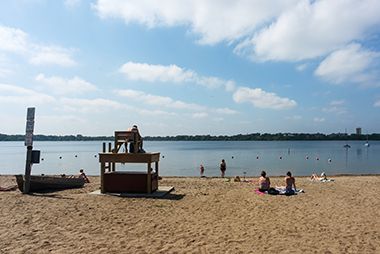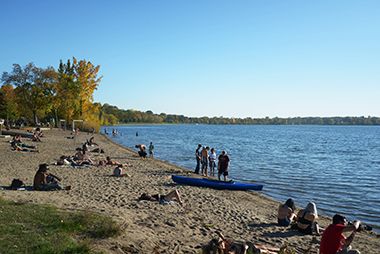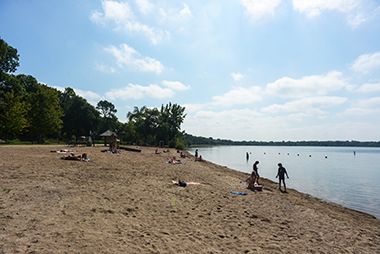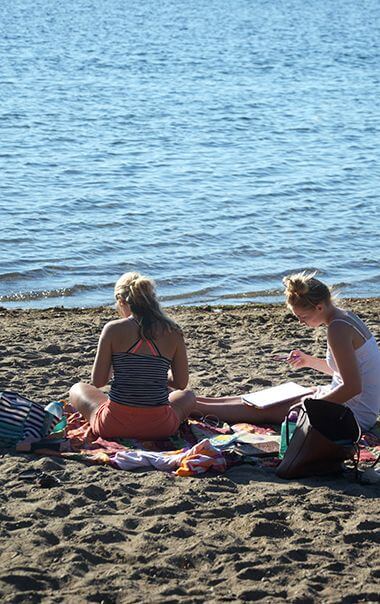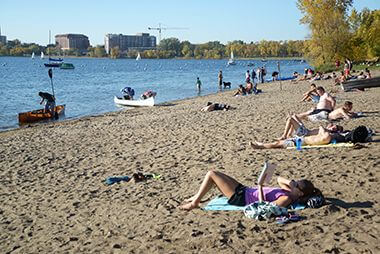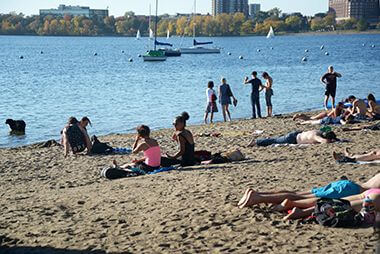Bacteria Monitoring: E. coli
MPRB staff monitor bacteria levels weekly and post a closed sign at the beach and indicate the closure on the Lake Water Quality Map if:
| Single-Sample Limit | A single water sample exceeds an E. coli count of 1,260 organisms per 100mL of water. |
| Geometric Mean | The geometric mean of E. coli counts from 5 samples equally spaced over a 30-day period exceed 126 organisms per 100mL of water. |
If a beach is closed MPRB staff will re-sample and reopen the beach when bacteria levels are within state guidelines.
Blue-green Algae Monitoring: Cyanobacteria
MPRB staff monitor for blue-green algae weekly. An advisory is posted on the Lake Water Quality Map if Minnesota Pollution Control Agency (MPCA) guidelines are exceeded or when blooms blow into the beach area. When at the beach, look for informational signs on blooms or yellow advisory signs.
| Blue-green algae cyanotoxin | Swimming guidelines (ug/L) |
| Microcystin | 6 |
The advisory status will end when levels are within state guidelines.
A few things to remember:
- You cannot always see or smell when water conditions are poor.
- Swimming is not recommended after a heavy rainfall because bacteria levels in the water may be high.
- People and pets should stay away from the water and avoid contact if a blue-green algae bloom is present (most often blue-green in color, but can also be reddish-purple, or brown), or the water is murky.








